| Revista Umělec 2003/2 >> Red, Yellow and Blue in the Middle of Nowhere | Lista de todas las ediciones | ||||||||||||
|
|||||||||||||
Red, Yellow and Blue in the Middle of NowhereRevista Umělec 2003/201.02.2003 Jiří Ptáček | albania | en cs |
|||||||||||||
|
I
In the vestibule of a large hotel in Tirana where, in the end, we did not stay, I noticed a poster on a tourist board with the attractive slogan “Albania: The Last Secret.” It accosted us because we had no desire to see the sights of a country that had weathered the ravages of Enver Hoxha. We were here to find out what was happening at Tirana’s second biennale. The patron of the first biennale two years ago, Gian Carlo Politi, had taken great pains to ensure publicity. However Politi, after some time back in Italy, announced that he was not going to take part in the organization of the second biennale. And promptly transferred his interests to Prague. But curator of the National Gallery Edi Muka stepped in and evaporated the dark cloud over the future of the show was. In conversations, he bantered in a somewhat injured tone about Prague, saying, “it used to be Prague, today it’s the capital of the Czech Republic, Tirana.” However, he accepted official responsibility for the organization of the second round of the international show in the poorest nation in Europe. An ominous foreboding hung in the air. Now it was a question of whether Tirana had made it once in two years onto the holiday itineraries of cultural nomads II Edi Muka is world renowned for his activities which try to join Albanian culture to the rest of the world, while wiping out the consequences of the nation’s totalitarian and post-totalitarian isolation. He not only represented the Albanians during preparations for the first biennale, but in 1999 he was established at the head of the institute which was to transform 11,000 square meters of Hoxha’s marble mausoleum, the so-called Pyramids, into the Tirana Center for Contemporary Arts. The financing was secured from foreign institutions and the center moved to become independent of the state budget. It offered information and production services; it had space available for exhibitions and music, the installation of a permanent theater and the organization of support for cultural projects for the whole of Albania. Moreover, he obtained 100,000 dollars from the Soros Open Society Fund to establish a media center. Nevertheless, in one fell swoop the project came to a halt, despite domestic and foreign protests, when in February 2000 the Prime Minister removed Muka from his post. Characteristic of Albanian political realities, no reason was given for his removal. The most likely cause was the success of Muka’s former colleague and one-time close friend from the Academy of Art, Edi Rama, who was then the Minister of Culture and was running in elections for mayor of Tirana. This was the beginning of the Rama era, and the “pro-Rama” TTCA was a political thorn in the government’s side. Edi Muka moved to the National Gallery, but continued to voice his sympathies for Rama. Now, due to this, he has turned the whole event into an unofficial election campaign. Indignation among artists and curators caused the same statements to be heard on all sides: In Albania it is impossible to achieve anything without political connections, and in Albania politics is a matter of individual personalities. Edi Rama was seen as the lesser evil. The Opposition has indeed accused him of populism and wasting project finances. This much is clear, but it does not solve the town’s problems conceptually. On the other hand, Rama is the official representative of the town, an advocate of democratization and of the younger generation, in whom he sees a possible accelerator of change in Tiranian and Albanian society. His activities demonstrate the hard work of improving Tirana’s pluses: the spontaneous slums in the center were leveled and in their place he built a park. He supported the planting of trees, the cultivation of the banks and the bed of the polluted river Lan, and he is trying to force crime out of the city center. What first strikes the eye, however, are the colored facades of the older buildings. Not only is Rama worthy of them, it was his idea. The red–yellow–blue geometry is meant to bring the gray town into the 21st century. The idea is that Tirana is to don her water sprite’s gown in order to awaken confidence. However, it no surprise that Rama’s current election posters join three aspects: color (colored smudges), the dynamics of youth (high-spirited children) and the dynamics of change (a steamroller). In the end, the uncertainty around Edi Rama’s assignment to head up the biennale was visible in the lingering differences between the post-totalitarian and democratic worlds. While art in western circles has many years of experience of being circumscribed by political pressure, participants from post-totalitarian countries could only understand this experience with difficulty as a serious infringement of their rights. The politicization of art at a time of social transformation demands a natural place for itself in this transformation, a sharing of radicalism. III Edi Muka drew attention to the changes his conception enacted during the preparations for the biennale. He left the form of the biennale to independent teams who were to choose from among young artists. The biennale was also to be bolted together by individual notions of the chosen theme: Utopia, a utopia which the artists individually distinguish in reality or bring into the world. Thus the letter U in the central term “U-topos” was connected to the English word “you.” If communism under the utopia of the red flag and post-communist chaos plundered the country and if Tirana in the last few years showed off its Potemkin-like gilding, the thought of a new start, plurality, visions, dreams and their pitfalls was to be the impulse for artistic creation. First, it was obvious that the branches and shoots from the thematic trunk had grown too far. A glance through the catalogue, arranged according to the main curators, artists as curators and contributing curators, gives the impression that even the exhibited presentations (and these should surely be the most important platform of the event) could be sustained in a rich and conservative air. However, a visit to the National Gallery and the National Museum, whose space the biennale shares, is different. Individual collections were able (it is not clear why) to be so perfectly mixed that they lost not only their individual optics, but oftentimes the U - topos itself. In the same way, the installations were accompanied by the blind faith that the exhibition hall could carry everything. If the acoustic qualities of contemporary art have already become the equivalent partner of the visual, and if both consistently copy the development of techniques, here such art has been installed at destructive proximity, for some unknown reason. Although only video and projection were used from the technological media, their sound patterns blended, rendering them unintelligible. General doubts were raised about the parameters of the young art show. The organizers often: 1. Do not have such large enough budgets to ensure works of the most demanding nature and of monumental dimensions. Consequently the exhibition was made up of “miniature and disfigured intentions.” 2. Are afraid to invite fewer artists, as they need to fulfil the unwritten agreement about internationally important events. They do not even have extra works at their disposal, which would allow them not to include weaker works in the final show. Leaving a work out might threaten ideas about the range of the event. 3. The non-standard exhibition space fights against the individuality of works originating in other circumstances, and which were transferred (such works are still the majority) to the conditions of the show. It seemed a forgotten fact that the Venice Biennale had yet to finish and the biennale in Istanbul was just starting, and comparison to one or both of these exhibitions will be made. Not gauging economic or qualitative measurements, but rather the articulation of the chosen topic. What’s more, the 2nd Tirana Biennale relies too heavily on the benevolent handling of outsiders. But if it sets itself the goal of entering the context of prestigious artistic events, then it must seek not only its own position, but also the language by which it will be clearly characterized and differentiated. IV At the same time, though, the biennale offered comprehensively distinctive features. However, it simply did not manage to persuade and did not permit “slips” into the theme. The theme, on the other hand, with foresight, orientated itself towards the show. In the first place, it showed that Tirana can be a platform for presenting the art of a wider region in the context of western and central European art. While the terms of Balkan art come from its zenith and the first sharp criticism, it substitutes them with a more comprehensive image of a sort of “post-Ottoman,” multi-cultural, newly identified and now also pro-western world, which is created by an experience contrary to the rest of Europe. Let’s not forget at the same time that Albania is also ethnically mixed, and the south is populated by Greeks, that it is influenced by characteristic local phenomena like emigration and immigration, organized crime, a legal vacuum and economic recession. The Tirana Biennale declares itself the largest art show in the Balkans and even today is taking advantage of its potential. This is shown by the gathering of representatives of domestic and Kosovan art (and in the frame of a widening cultural circle, Turkish artists too). If the emerging trend is deepened, the Tirana Biennale could in time become a base for “Mediterraneans” and their questions. This is symbolized by this year’s apparent propensity for Italy, and a surprisingly strong Izraeli participation. Similarly, Albania itself drew the attention of foreign artists in order to answer the question of what U-topos could mean, grafted on to local signs of the current situation. And several excellent reactions to the Albanian climate immediately sprang into view. Mateo Bejenar from Romania assailed the dismal social situation directly by building a source for quality drinking water for the public in the neighborhood of the Pyramids. He estimated the number of Tirana inhabitants who came for water on the first day to be about 1,000. The Dutch enterprise Orgacom once again presented 12 work concepts on how to economically benefit from the existing potential of the country. Their ideas were only supposed to be humor and panache, as long as visitors to the National Gallery couldn’t vote for them, and Orgacom didn’t promise to attempt to make the winning design. The curators’ section, Optimistic Violation by Hans Ulrich Obrist and Anri Sala, invited six artists and, according to their designs, made another six brightly colored facades for houses in Tirana. Public activism also brought them a more powerful platform discussion about the differences between their artistic and Rama’s political acts, and about taking art into the gray reality of the town. Perhaps it is also possible to stretch out even the genuine gallery project of Rainer Ganahl. He took unflattering texts about contemporary Albania from American newspapers and submitted them for reading to those who were written about. Here, reflections on what is happening in Albania, how the land is affected and what an artist can do with this material was crystallized in one of the most powerful moments of the Biennale. It did not try to blind itself to or knock down the barriers that separate foreigners from Albanian reality. Instead, it decided to take it in as a warning and spur others on to positive impulses. V Only one who has lived even briefly in Albania can understand that the international display of art mainly satisfies the need for the local intellectual community to be in touch with international affairs. Opening day was reminiscent of a large family gathering. It was as if the show wished to explain that “it is not important whether all goes well, but that we are all here together.” Maybe it was a matter of an unintended ritual of physical solidarity, because the artistic rise of most Albanian artists has shown that they seriously participate in the psyche of the artistic world, but it was as if real physical presence was intended to confirm this. Suddenly, it was of no overwhelming significance that the exhibition did not allow enough space to represent everyone. Just as long as it took part in offering a place for human relationships to happen. And if an extraordinary performance spruced it up, then it would only complement this relationship. VI It is not particularly insightful to finish up such a wide-ranging text with a list of works which in one way or another exceeded the average. Of course, looking through the 2nd Tirana Biennale and accumulating reservations and annotations, a work of art will naturally draw attention, despite the transparency or non-transparency of the concept. So what was most attractive? The video by Piny Grills called Human: really only a collection of low quality pictures found by an internet search engine when the artist entered the word “human.” Added to this was a composition of storytelling children, passionately and fantastically corresponding to what is human. Squat King Kong by Gregor Passens in a hall on the first floor of the National Gallery. A black archetypal monster which film-script writers allowed to be degraded and killed in order to wheedle from us another few tears. A symbol of the west and a scary evildoer?! A monster that wanted to be here but couldn’t get in?! Collage prints of a forested city from an installation by Bert Theis — an over-the-top, but impressive vision of ecological activists. The animation Yioutofthe-blue.com by Yi Zhou: a gentle and hard-to-describe plaything with the small figure of a girl who with her graceful movements changes the surface of the screen. The environmental cell of Pietro Roccasalva is different in that it combines minimalist painting with artificial architectonic absurdity, not to mention that it is unobtrusive and technically perfect. The photography of Aydan Murtezaoglu from Turkey in which a man, children and two kid goats stand in one family dance circle. A simple picture of “superhuman” solidarity. A calculated arrangement or tradition — here in the sense of the urbanized European collapse. A performance by the Israeli Adina Bar-on in front of the gallery building and its surroundings. Clad in a red or black ensemble, the performance ranged here and there and she endowed it with a configuration of suggestive gestures — intimate, painful and heroic. The nerve-racking shifts from volatility to total concentration will be difficult to forget. Martin Zet’s 50-kilometer walk to the seaside to make salt. The installation Revolutions on Request, a hurriedly constructed environment for a kind of business with bizarre designs and trenchant post-industrial painting. The simple video documentary by the pair Maja Bajevic and Emanuel Licha in which Maja walks through a green Sarajevo meadow and tells where exactly her family’s house stood before the war, and what it was like. The ideal and still incomprehensible hybrid partner photography of Rovena Agolli. In the sun and dust of a glowing notice board for future billboards in the static video instal lation of Anri Sala. Two portraits by Ylva Ogland from Sweden. At first sight the young men have prophetic impersonal expressions; after reading the accompanying text they become the faces of the artist’s father’s friends, who in their time lived in a utopian community of ideals, on heroin. Because of these works, it was worth traveling 2000 kilometers, getting lost in the Albanian mountains, sleeping in a bare bed and surviving a sudden case of intestinal colic. In two years hopefully I’ll have saved enough money to be able to fly back to Tirana.
01.02.2003
Artículos recomendados
|
|||||||||||||
|
04.02.2020 10:17
Letošní 50. ročník Art Basel přilákal celkem 93 000 návštěvníků a sběratelů z 80 zemí světa. 290 prémiových galerií představilo umělecká díla od počátku 20. století až po současnost. Hlavní sektor přehlídky, tradičně v prvním patře výstavního prostoru, představil 232 předních galerií z celého světa nabízející umění nejvyšší kvality. Veletrh ukázal vzestupný trend prodeje prostřednictvím galerií jak soukromým sbírkám, tak i institucím. Kromě hlavního veletrhu stály za návštěvu i ty přidružené: Volta, Liste a Photo Basel, k tomu doprovodné programy a výstavy v místních institucích, které kvalitou daleko přesahují hranice města tj. Kunsthalle Basel, Kunstmuseum, Tinguely muzeum nebo Fondation Beyeler.
|




























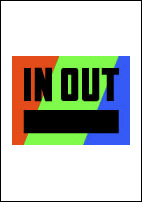




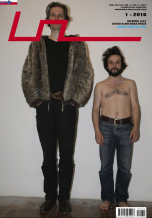
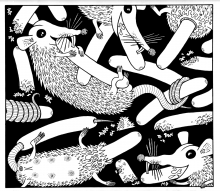
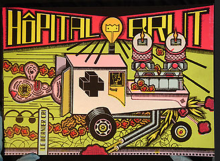
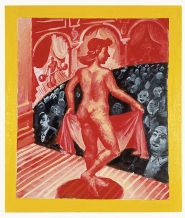


 We Are Rising National Gallery For You! Go to Kyjov by Krásná Lípa no.37.
We Are Rising National Gallery For You! Go to Kyjov by Krásná Lípa no.37.
Comentarios
Actualmente no hay comentariosAgregar nuevo comentario